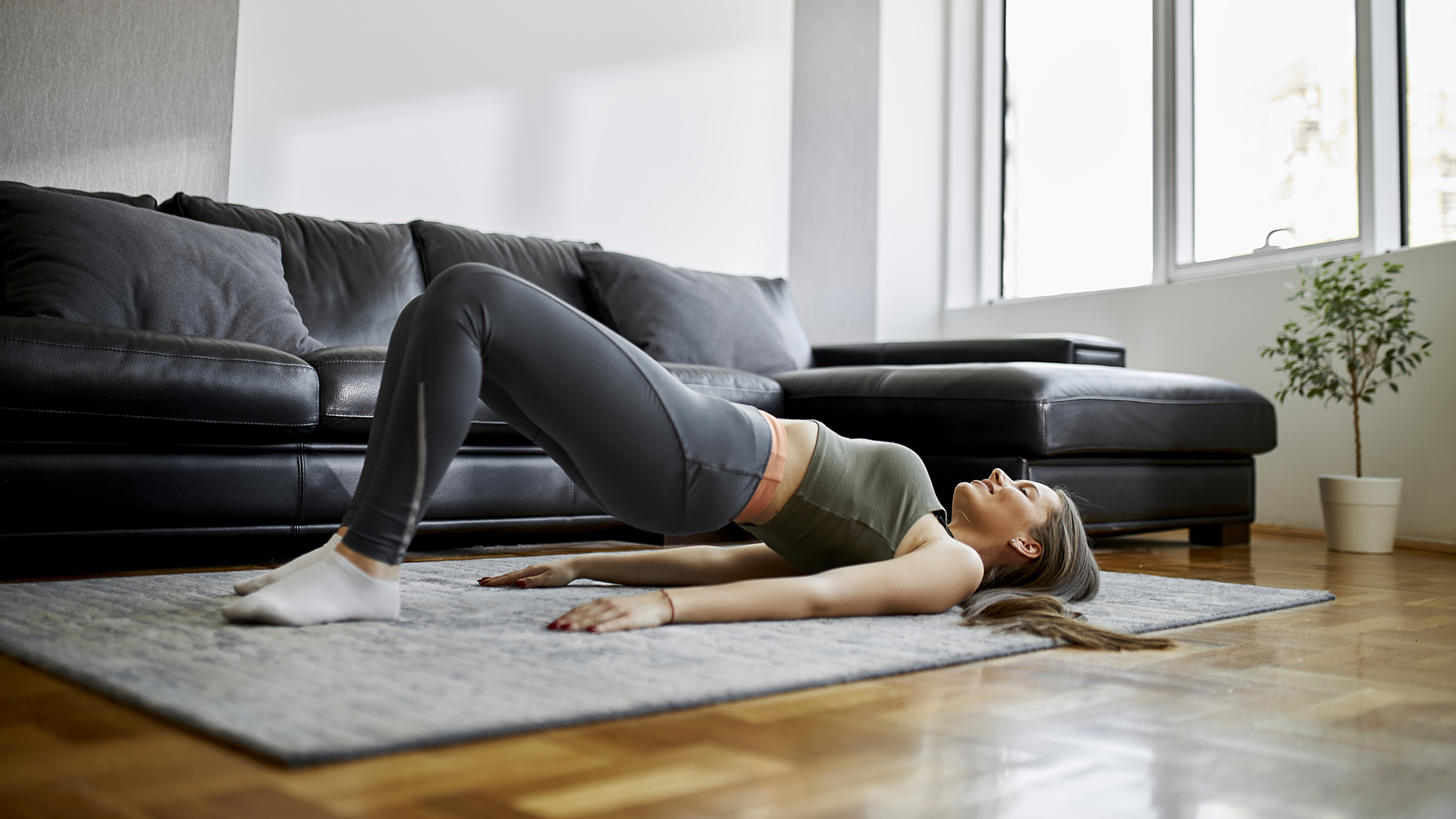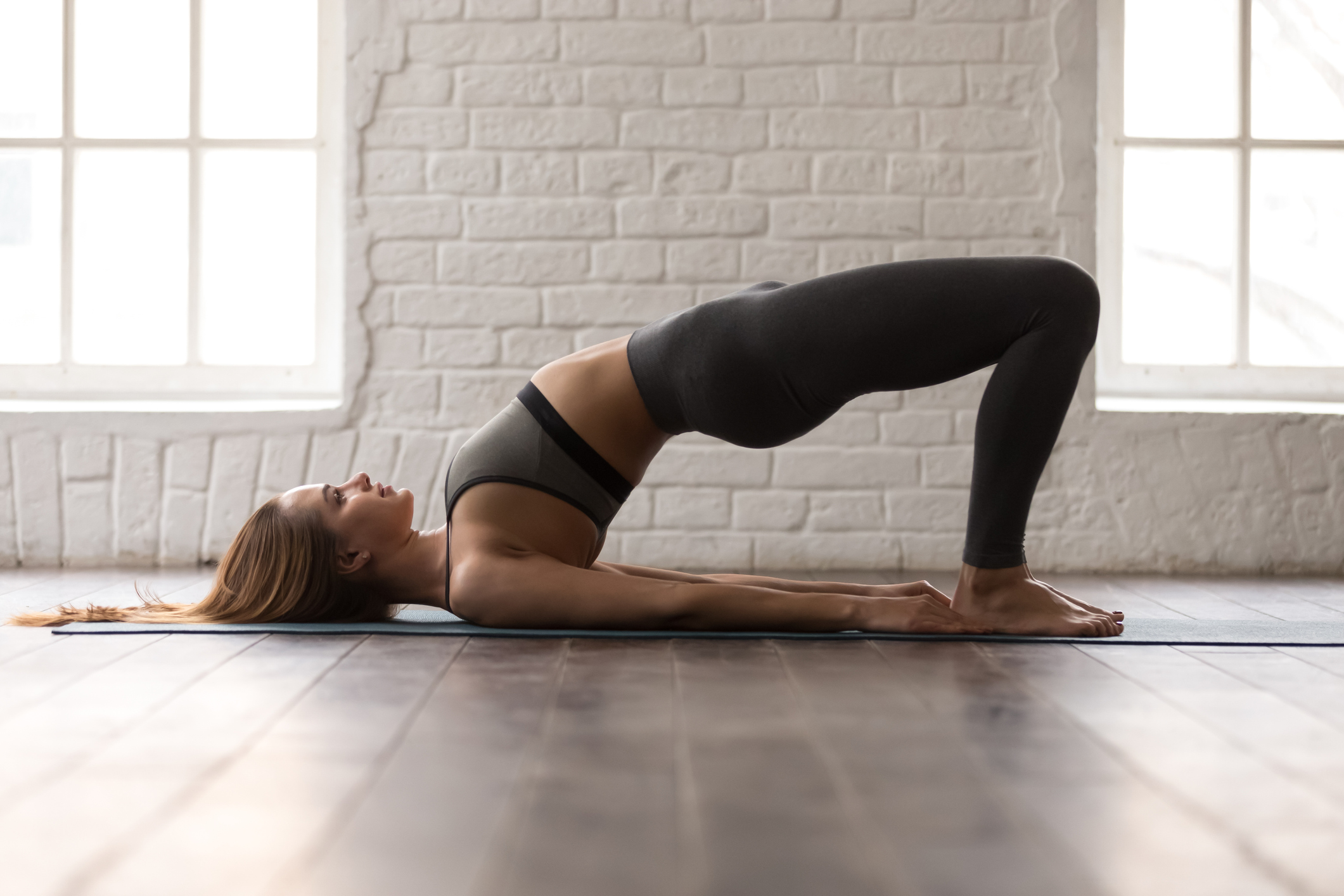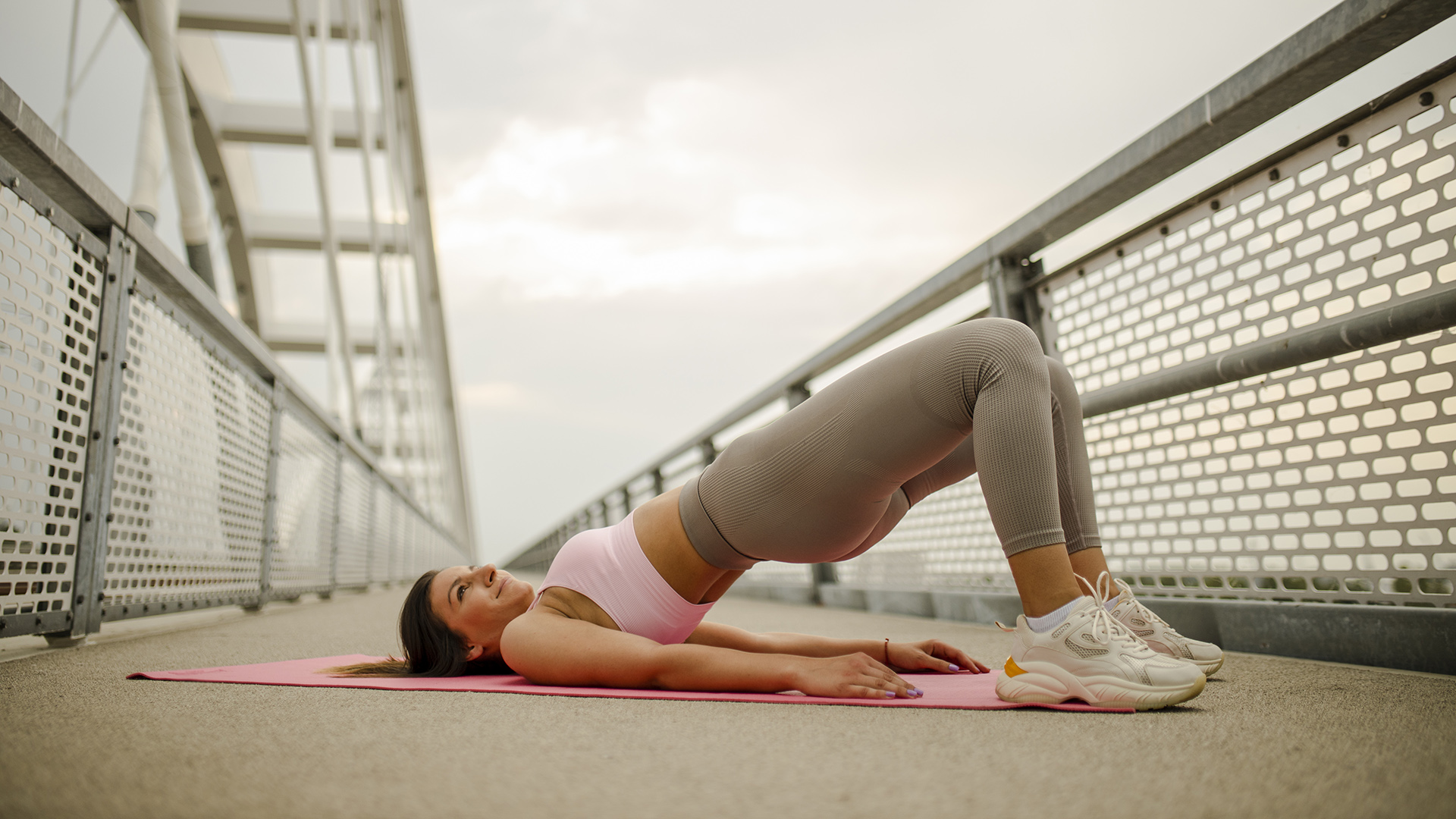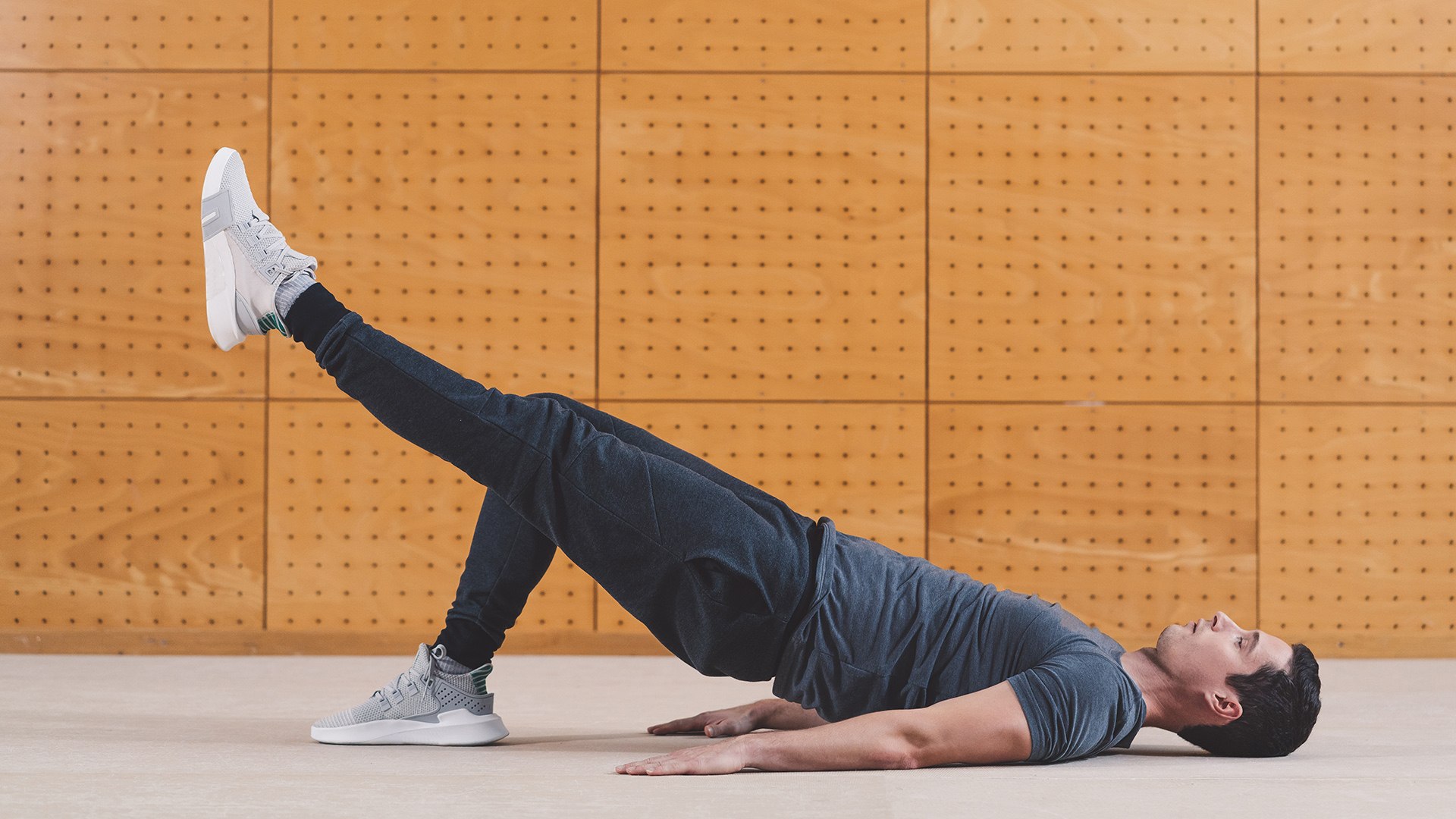

Thanks to the likes of J.Lo, Beyonce, and anyone else with a bootylicious butt, the humble glute bridge has enjoyed something of a resurgence in recent years – particularly with female gym goers wanting more junk in their trunks. But the simple fact is that there are so many other reasons to perform glute bridges regularly, aside from toning your tush.
As the biggest muscle in the body, the glutes are responsible for many of the movements we perform daily, from walking and running to sitting down and standing up, so it’s crucial to keep them strong, especially as we get older. In addition, a strong set of glutes can help to protect you from pain in the back, hips, and knees and will massively improve your sporting performance.
Sadly, I have long been cursed (like so many others) with lazy glutes from years of sitting on my butt for entire working days. The result of this Dormant Bottom Syndrome, or DBS (yes, it’s an actual condition, and that is its real name), means my body is stronger in the anterior chain (the muscles at the front of the body) as opposed to the posterior chain (the muscles at the back). And that means my hip flexors and quadriceps take over when I’m walking, running, or working out.
In short, I can do all the squats in the world, but unless I make an extraordinary effort to focus on my glutes - or activate them before I start exercising - they don’t really get a look in, which equals a not-so-peachy posterior for me. So how could I overcome my DBS and get my glutes firing on all cylinders? Why, with a fitness challenge, of course! Here’s what happened when I did 100 glute bridges a day for an entire month.
How to do glute bridges
There are many versions of the glute bridge exercise, including a single-leg variety and alternatives that use dumbbells, weight plates, barbells and resistance bands. However, before you progress on to any of those adaptations, it is essential that you nail the basic bodyweight glute bridge first to perfect your form and avoid injury (if you have back issues, seek advice from a medical professional before attempting this move).
- Lie face up on the floor, preferably on one of the best yoga mats, for better grip and comfort. Bend your knees and place your feet flat on the ground, hip-width apart.
- Rest your hands by your sides on the floor, palms facing down, then place your heels a few inches from your bottom so that your fingertips can graze the back of your heels.
- Keeping your gaze upwards and chin away from the chest, tilt your pelvis and engage your core by pushing your lower back into the mat.
- Squeeze your glutes and press your heels into the mat to raise your hips off the floor in a controlled motion until your body forms a straight line from your knees to your shoulders. Avoid overarching your back.
- Hold for a second or two, then reverse the movement by gently lowering your butt to the floor with the same control. Allow it to briefly touch the mat to complete one rep.
What are the benefits of glute bridges?
As you’d expect from an exercise called a ‘glute bridge’, this simple move primarily works the glutes. Comprising of the gluteus maximus (the largest muscle of the body), the gluteus medius, and the gluteus minimus, these muscles work together to move the hip joint, rotate the legs in and out, and stabilise the pelvis when we walk, run, or balance on one leg.
The benefits of strong glutes include better balance and stability through the entire leg to boost multi-directional movement, as well as improved posture to help you stand tall, and greater protection from pain in the back, hips and knees. Moreover, the glutes allow you to power through multi-joint compound exercises such as squats and lunges so you can train more efficiently and help you to be more explosive during acceleration and plyometric jumping movements.
Sign up to the T3 newsletter for smarter living straight to your inbox
Get all the latest news, reviews, deals and buying guides on gorgeous tech, home and active products from the T3 experts

Therefore, having a strong set of glutes is crucial for optimising basic movements like walking, running, climbing a flight of stairs, picking something off the floor, and boosting athletic performance when running, weightlifting, or playing sports. Unfortunately, studies show that the gluteus maximus is prone to weakness which can contribute to injury, muscle imbalances, chronic pain, and athletic under-performance, so taking care of them is necessary.
Interestingly, while everyday movements and exercises like walking, running, squats and lunges work the glutes in an upright, vertical plane, and moves such as band walks or hip abduction work the glutes through a lateral plane, we often neglect to work our glutes in the horizontal plane.
This explains why lying glute bridges help stimulate the glute muscle fibres differently from what our bodies are generally used to, why they get such good results, and why you should be incorporating them into your workout regime more often.
I did 100 glute bridges a day for a month and was surprised by the results
Week 1
Due to my lazy glute syndrome, I’d already been incorporating three sets of 15 glute bridges into my four-times-a-week workouts (after warming up and before the main event) for around six months in an effort to get them fired up.
Stupidly, I didn’t think doing 100 reps would be that much more of a stretch than 45. But I was wrong. At around the 60 rep mark, my glutes started to burn, and by rep 80, I realised my form was starting to fail because my hamstrings were beginning to feel the pain, which isn’t really the goal with glute bridges. After resting and regrouping, I moved slowly through the final 20 reps, ensuring my core was engaged throughout and my pelvis remained tilted. Afterwards, my legs felt like jelly and climbing the stairs was brutal.
My glutes didn’t feel too bad on day two, so I battled on, although I started to feel the burn at rep 40, and the rest of the glute bridges were a bit torturous. The next day, I’ve got to say I was in a lot of pain, and simple tasks like sitting down and getting back up again were agony, although massaging my glutes with my massage gun did result in a sadistic kind of pain relief.
I’d love to say that the pain in my butt was gone by the end of the week, but it was always there. That said, it was a satisfying form of pain. In fact, I found it crazy how doing glute exercises every day helped me tune into my glutes much more during everyday tasks. I felt my glutes in action with every step I took, and, if anything, I found myself elongating my stride to thrust my leg back further and feel the squeeze even more.

Week 2
During the second week, I decided to focus on my form more by slowing things down even further. I took two seconds to squeeze up, paused at the top for two seconds, and then took two seconds to lower down before letting my butt ‘kiss’ the floor for a nanosecond to maintain the tension in my glutes.
Because the key point of this move is to keep squeezing. It’s not enough to lift and lower your hips – you’ve got to feel it every step of the way, but definitely not in your back or hamstrings. By the end of the week, my glutes were still on fire, but honestly, I was starting to enjoy the feeling.
Week 3
By day 18, I was beginning to feel like my new ‘constant achy butt’ syndrome was wearing off, and I didn’t like it one bit. Therefore, not wanting to introduce weights, I decided to up the ante by progressing to single-leg glute bridges.
The first thing I can say is ‘ow-wow-wee-wow’. Single-leg glute bridges were a whole new challenge without a single dumbbell or resistance band in sight because they are a much more targeted move. In fact, it still blows my mind how the simple act of raising one foot off the floor suddenly makes everything 20 times harder.
I did 50 reps on each side, but if I’m honest, I had to keep changing legs every 10 reps because I did experience a few shooting pains in my hips and some tightness in my hamstrings and quads. I didn’t panic, though. I knew I was just challenging my body in a new way, and by the end of the week - with the aid of lots of dedicated stretching in my lower body – I was feeling all the stronger for it.

Week 4
So, here’s the thing. If you’re reading this in the hope of hearing that my butt grew by two inches by the end of doing 100 glute bridges a day for four weeks, you’ll be sorely disappointed. Because it didn’t. I did take my measurements before and after the challenge in the name of journalist integrity, but I’m pretty sure I didn’t gain even one centimetre of growth; such were the unnoticeable aesthetic gains. If anything, I felt my bottom looked tighter, slightly smaller, and more toned with a little lift.
Of course, that’s not to say that glute bridges won’t help you grow bigger glutes over time, but you’ll probably need to add more resistance in the form of heavy weights to exhaust the muscle and create little muscles tears before you aid the repair process with rest and extra protein to help them come back bigger and stronger.
Growth gains (or not) aside, I’ve got to say I loved the difference that doing daily glute bridges brought to my body. My glutes felt permanently activated, which meant I felt them working with every step, bend, twist or jump I took.
I learnt to appreciate just how vital the glutes are in powering every single movement we do, and I’m even more determined to keep them activated because I can feel them powering my runs, squats and lunges, more so than any other muscle - even my core.
In conclusion, I’d say give this challenge a go. You don’t necessarily have to do 100 reps. Just 50 glute bridges a day will help you tap into this powerhouse muscle, but you’ll soon notice that every move you make in life will become easier, and that’s certainly something to feel grateful for.
Jo is a London-based freelance journalist and content creator specialising in fitness, health, lifestyle and beauty. With a degree in Journalism, Film & Broadcasting from Cardiff University and almost 20 years’ experience in the industry, she interviews celebrities and Olympians for a living, while testing out the latest beauty, hair, wellness and fitness gadgets. As a Level 3 Personal Trainer and author of several fitness guides, she gets to try the coolest workouts while reviewing active travel destinations and writing investigative features about the wonderful world of wellbeing for many of the UK’s top magazines, newspapers and digital publications. When she’s not sitting at her laptop, Jo likes exploring new walking spots with her beagle, gardening, and DIY. She is also one of the few people on the planet still obsessed with what’s coming up in Phase 5 of the Marvel Cinematic Universe.